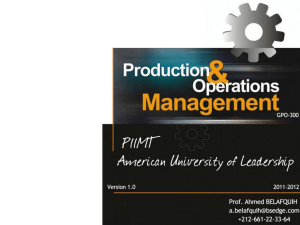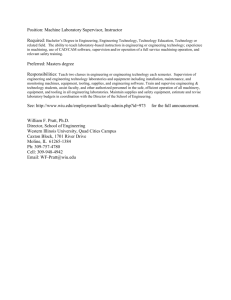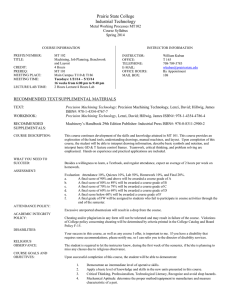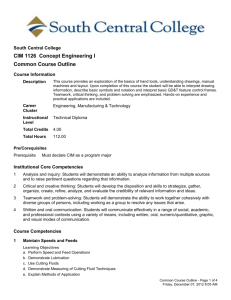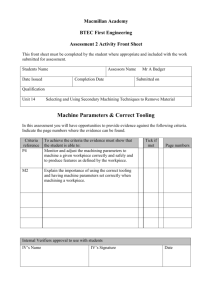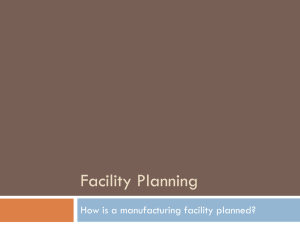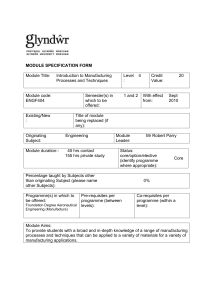Operation Analysis - Auburn University
advertisement
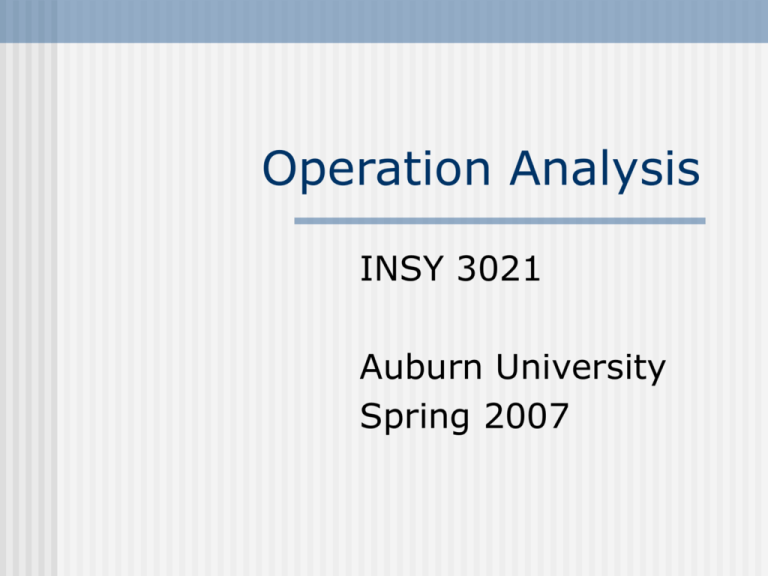
Operation Analysis INSY 3021 Auburn University Spring 2007 Questioning Attitude Why is this operation necessary? What can be done to make the job safer? Who can best perform the operation? When is the best time to schedule this maintenance? How can the task be improved? Operation Purpose Try to eliminate or combine an operation prior to improving it! Some operations exist because the previous work was unacceptable, necessitating “touch-up” work supposedly accomplished by the first operation. Can an outside supplier perform the operation more economically? Questioning Attitude Part Design Review every design for possible improvements. Simplify design to reduce # of parts. Make joining, machining, and assembly easier. Design for manufacturing. Tolerances and Specifications Designers may overcompensate with very tight tolerances (high production cost and time consuming) because they are not aware of the capabilities of the manufacturing dept. Cost vs. Machining Tolerance Materials Find a less expensive material Find materials that are easier to process Use materials more economically Use salvage materials Use supplies and tools more economically Standardize materials Negotiate best prices from vendors Manufacturing Sequence and Process Rearrange operations Mechanize manual operations (ergonomically designed tools) Use of robots Operate mechanical facilities more effectively Manufacture near the net shape (eliminates material removal) Setup Reduction (SMED) and Tools Tooling amount based on production quantity, recorders, labor, time limits and capital. Perform setup work while the machine is running Use efficient clamping devices Eliminate large adjustments Use templates or block gages Maintain records of difficult setups Machine Efficiency Use multiple cutting tools to use available power Use most efficient tooling Energy efficient motors Material Handling (MH) Depending on the part, 30%-50% of the cost is due to MH Reduce time spent picking up the material Use mechanized equipment Make better use of existing handling facilities Handle material with the greater care Use bar-coding where applicable Plant Layout Layout types (product or straight line & process or functional) Travel charts Muther’s Systematic Layout Plan (SLP) Travel Chart Work Design Manual work and principles of motion economy Ergonomic principles of workplace and tool design Working and environmental conditions Questions & Comments
